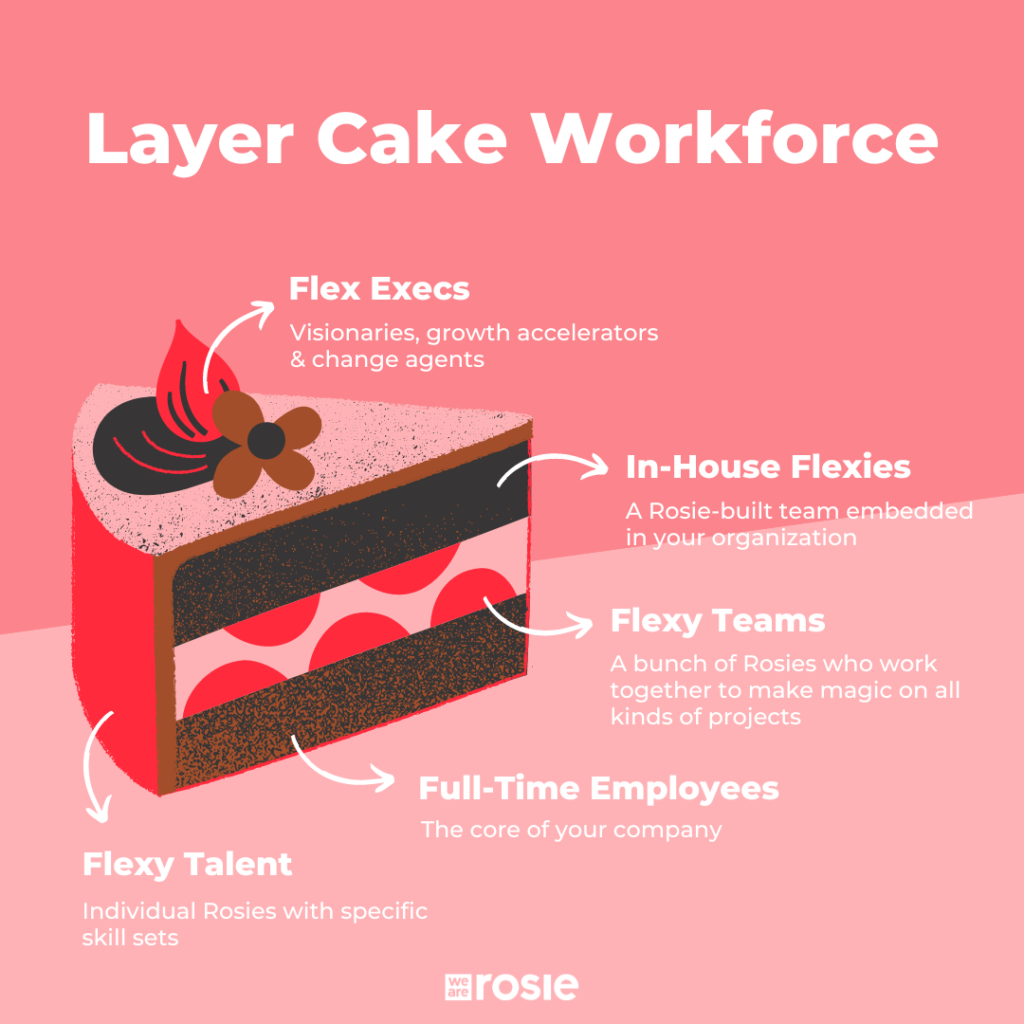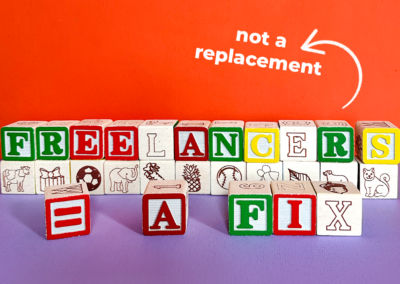Over the last 12 months, we’ve learned a lot about the world of work. One writer even deemed 2022 the Year of the Career, as certain pandemic-era workforce changes began to crystalize. It’s been like one huge project post-mortem exercise, with everyone figuring out what their “start, stop, continue” list looks like.
One thing is clear: flexibility isn’t going anywhere. More and more workers are demanding it, and leaders who don’t understand this are missing out on amazing talent, from early career folks right up to the C-suite.
While we don’t yet know how 2023 will shape the future of work, these eight lessons are sure to impact the months and years ahead.
1. The Great Disconnect drove the Great Resignation
The Great Resignation began in 2021, but it continued for much of 2022, as more than 4 million people quit their jobs each month.
In our pandemic-affected economy and society, there are, of course, many reasons why people resign, from the possibility to earn more elsewhere to the lack of childcare. But when we surveyed marketers and other professional services workers for our 2022 Rosie Report, we found something else at play: “The Great Disconnect” between company leadership and employees.
Most executives were ready to return to 2019-style office work, but few employees were on the same page after experiencing the benefits of flexible and remote work during the pandemic. In fact, flexibility was the top reason freelancers cited for choosing independent work, according to our survey data.
And it doesn’t seem like those preferences are changing as we head into 2023. A recent report from LinkedIn highlights the gap between supply and demand for flexible work: in October 2022, only 15% of job postings on the site advertised flexible work, but those opportunities received 50% of applications. So, the Great Disconnect carries on.
2. Hybrid work is here to stay
Employees want flexibility and remote work. Employers want people in the office. Hybrid work is the compromise many companies need to make if they want to attract top talent moving forward.
We heard this from Mike Della Porta, the COO & CIO of top agency Butler/Till, which has embraced hybrid as the way of the future.
“From an operations and technology perspective, we’re committed to enabling a hybrid workforce so that our employees can do their best work and have a best-in-class experience, regardless of where they are located,” Mike told us in August. “That flexibility is paramount to attracting and retaining the best talent.”
It’s worth noting that Butler/Till is not your typical company; it’s 100% employee-owned and a certified B Corp, so the people-first approach is woven into the fabric of their culture. But their bottom line has benefited too (2021 brought record revenue), showing that leadership and employees can come together to evolve company structures in ways that benefit everyone.
3. Freelance work is mainstream
The We Are Rosie team has had a front-row seat to the growth of independent and freelance work in recent years, and we’ve always seen flex as the future. The rest of the world is finally catching up.
Data from The 2022 Rosie Report shows that the stigma around independent work is disappearing. Freelancing is more than just a way to earn money in between jobs; it’s an intentional career and lifestyle choice.
- 19% of our survey respondents said they turned to freelance work as a way to fill the gap between full-time jobs.
- 51% said they chose it because they want flexibility in their schedule.
And that’s what we heard from our 2022 Rosie Award winners, too. Tasha Prados, the Liberation Award winner, left a high-profile agency role to strike out on her own and travel the world. In a few months, she had replaced her corporate salary while working half the time.
With success stories like that, it’s no wonder so many people are inspired to take the leap into freelance work these days.
4. Even top executives are going flex
The freelance trend isn’t limited to early and mid-career professionals. High-caliber industry execs are being drawn away from full-time work by the flexibility, autonomy, and impact they can have in the consulting world. Their willingness to work in this way is one of the factors contributing to a rise in interim and fractional CMO positions.
Stacy Sanford, a former tech company CMO and member of the Rosie community, told us, “People now want more predictability and control over their time and work, and contract engagements offer that because you’re controlling the work, the work doesn’t control you. Having experienced executive marketers available for non-traditional work arrangements is a new, high-value paradigm. I think the need has been growing for years and it’s finally being filled.”
We couldn’t have said it better ourselves.
5. To build better teams, think layer cake
A really great layer cake—with different flavors and textures—isn’t just a way to win Star Baker on “The Great British Baking Show.” It’s also the best way to build teams of the future. By combining different types of talent, you’ll infuse your team with agility, resilience, and inclusion.
How to do it? Think of your full-time employees as the base layer—the people you need all day, every day. They bring consistency and institutional knowledge to your brand.
From there, you can add on “layers” of individual consultants or freelancers who work with you on an ongoing basis, as well as folks who come in for a season or two to help with a special project, maybe even annually. They can range from executors who get the work done to high-level strategists and visionaries who can solve your business’s biggest challenges.
Building a workforce in this way allows you to change your team’s capacity and skill set throughout the year. It also gives your full-time employees the support they need so they don’t get burnt out. Think of it as both an innovation strategy and a retention one.
And if those benefits aren’t enough to convince you, well, the layer cake also has inclusion baked into it. (Sorry, we couldn’t help ourselves.) Many people, from caregivers to military spouses, can’t work in a full-time 9-to-5 capacity. By creating roles on your team that are project-based or part-time, you’ll be able to engage amazing talent you might not have otherwise considered.

6. In-house teams and agencies aren’t mutually exclusive anymore
In-house teams give brands more control and can provide unmatched efficiency, making it easier to respond to social, cultural, and current events in ways that younger consumers expect. But many marketers think running in-house teams “is an operational nightmare,” according to Digiday. And there’s always the risk of losing out on the bold ideas that agency teams bring to the table.
Thankfully, it’s no longer one or the other. Brands today are weaving together in-house and agency work in ways that capture the best of both worlds, whether that’s setting up their in-house team with a few external clients or using flex talent to make sure the team remains agile.
We’re pretty proud to be leading the way on the latter with our Flexy In-Housing program, which helps brands reduce risk (and the operational horrors) by allowing for a test-and-learn approach. You might start with one team setup and then realize you need different roles or levels of experience. No problem. By combining a flex-work mindset with your in-housing strategy, you never get stuck with a less-than-ideal org chart.
7. It’s time to rethink unlimited PTO
The allure of taking time off whenever you want or need to? Too bad the dream is far from reality. We now know that employees with unlimited PTO actually step away from work less than their counterparts with more defined policies. Not great for wellbeing or retention.
During the height of the pandemic, We Are Rosie became another case study in why unlimited PTO doesn’t work: nobody was taking time off (mostly because of guilt) and burnout became more common. Never one to settle for the status quo, our CEO Stephanie Nadi Olson decided to rethink PTO all together. By instituting a mandatory PTO policy (with vacation days tied to annual bonuses), she changed the entire tone around down time.
We’re glad to be part of a growing movement of companies that are re-envisioning time off for the modern workforce. After all, the benefits to employee wellness (and business performance) are clear.
8. Full-time employment doesn’t equal stable employment
This year has brought plenty of contradictory signals for the economy, with lots of fretting over whether a recession is coming. Tech companies have braced themselves by shedding more than 120,000 jobs. The mirage of full-time work being stable is fading, to say the least.
In September, we heard the story of Jocelyn Johnson, a Rosie community member who had worked for one brand, via annual contracts, for seven years. When the world as we knew it stopped in 2020, so did her career—until she decided to go freelance.
After more than a year of independent work under her belt, Jocelyn debunked the myth of freelance careers being unstable, especially as she stitched together projects with different clients.
“Being diversified in this way has definitely provided additional stability,” she told us. “There’s no question about that. If I lose one opportunity, I always seem to have other things I can focus on.”
The 2022 Rosie Report provided more evidence of freelancers thriving despite the economy, as it highlighted the 12% increase in working freelancers that took place during the last recession.
No matter what 2023 brings, we’re sure that independent marketers will find success while still working in the ways that work best for them.



